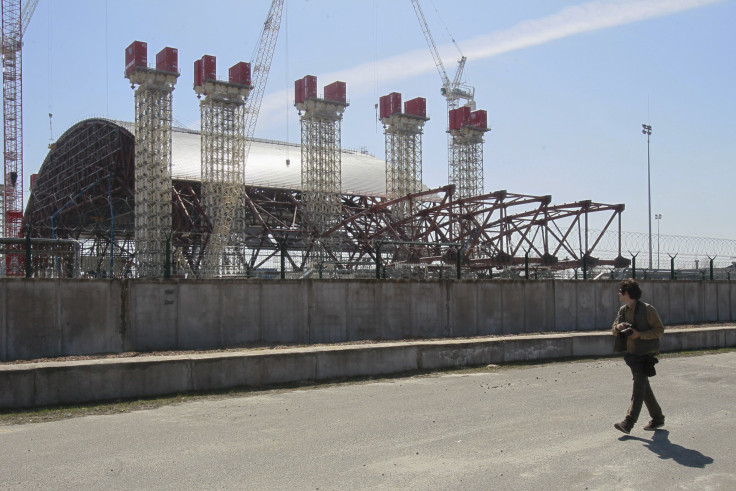As Fukushima Continues Releasing Radioactive Water, Chernobyl Is Close To Getting New Casing

The incident would last only five hours, but it continues to haunt the nuclear power industry 27 years later.
It was just a little after 1 a.m. on April 26, 1986, a quiet night like any other in the small Ukrainian city of Pripyat, near the northern border with Belarus and only 95 miles from the capital, Kiev. According to records, it was a warm evening, more like summer than early spring.
Pripyat’s population at that time was just under 50,000, but within four days it would be just a handful. The city had experienced the worst nuclear power plant disaster in history.
A series of explosions in Reactor No. 4 at the Chernobyl power plant, just three km (two miles) from Pipyat, had blasted 50 tons of uranium fuel from the reactor core, sending it high into the atmosphere and scattering more than 900 tons of radioactive graphite over the vicinity, causing fires and other damage. The Soviet government of the time only acknowledged what had happened after three days and only because drifting plumes from the radioactive cloud set off alarms at a Swedish nuclear power plant. The resulting fallout is considered the worst man-made environmental disaster in history.
The recovery for the region and Ukraine has been difficult after 27 years, with no real solutions forthcoming. However, with help from the European Bank for Reconstruction and Development and private donors, a replacement is near for the hastily built concrete sarcophagus that covers the wreckage. It was supposed to be replaced in 2005, but because of delays the project will not be completed until 2016, when the 30-year life of the sarcophagus ends. The new protective building is being built next to the current crumbling shelter and when completed will be slid into place using rails. The structure will be 344 feet high, spanning 843 feet and will cover Reactor 4.
To date, 43 donors have provided close to €1.5 billion for the EBRD-managed Chernobyl project. The EBRD has also contributed €325 million of its own.
Today, the population of Pipyat is officially zero and the city is uninhabitable, although it is rumored that people live there illegally within the exclusion zone, apparently able to live with effects of the radiation.
Chernobyl was a reminder to the world of the dangers involved in harnessing the power of nuclear energy. Countries across the world began to reconsider their use or scaled back considerably. And 25 years later an earthquake and tsunami in Japan offered a potent reminder of the dangers that destroyed a Ukrainian city a quarter of a century before.
The March 11, 2011, Tohoku earthquake and tsunami led to meltdowns in three reactors at the Fukushima plant on the northeastern coast of Japan.
Two and a half years later, the problems that Fukushima suffered are only worsening and becoming more apparent as the Tokyo Electric Power Co. admits that it has been allowing tons of radioactive water to seep into the Pacific. This has led to South Korea banning all imports of fish from the north eastern coast of Japan, resulting in further economic woe for people already suffering in the region.
© Copyright IBTimes 2024. All rights reserved.





















